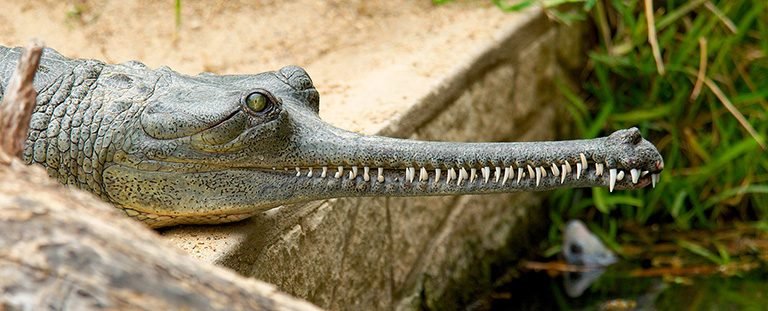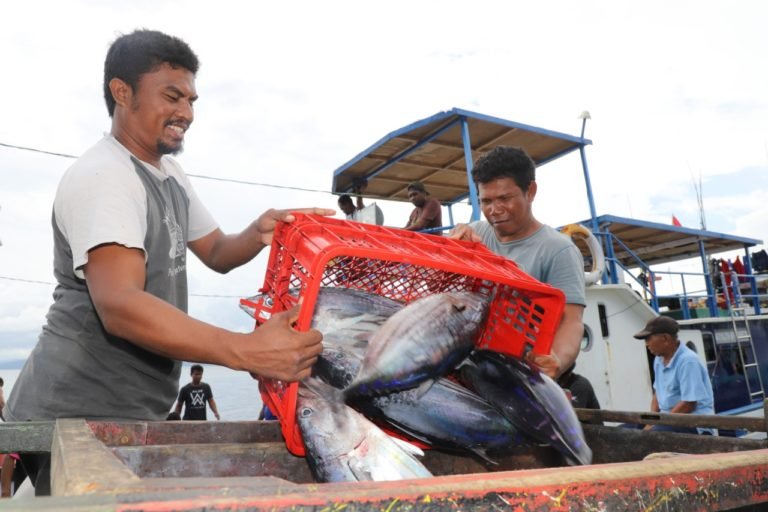- A new study has recommended ways to improve the success rate of a program that releases captive-raised gharial crocodiles into the wild in Nepal.
- The study looked at the growth of gharials released under the program going back 10 years, and identified the first two years in the wild as the most critical for the animals’ chances at surviving.
- It recommended timing the releases with periods when fish are more abundant in rivers, allowing the crocodiles to pack on weight while minimizing their energy expenditure.
- The study authors also call for addressing threats to the critically endangered species from dams, riverbed mining and fishing, and for closer cross-border conservation efforts between Nepal and India, where some of the released gharials have ended up.
KATHMANDU — A spark of good news for the gharial crocodile (Gavialis gangeticus) in Nepal last month shouldn’t obscure the challenges that remain in conserving the critically endangered species, experts say.
On June 15, just two days before World Crocodile Day, 28 gharial hatchlings were spotted in a tributary of Nepal’s Karnali River — the first sign of successful nesting in this waterway in at least 16 years.
Gharials, known for their distinctive slender snouts, were once abundant in the Ganges River and its tributaries (including the Karnali) that flow through the plains of Nepal and India. Today, their range is limited to a handful of rivers, and their survival is threatened by fishing, changes in river flow, and poaching.
Fewer than 200 breeding adults are believed to live in the wild in Nepal.
Since 1978, Nepal has run a program to raise baby crocodiles in captivity, in an effort to boost the gharial population. Program officers work in Chitwan and Bardiya national parks to collect eggs from riverbanks, provide a suitable environment for them to hatch in, and feed and raise the young crocodiles until they’re around 5 years old.
The program has been credited with saving the species from extinction, but it needs to be tweaked to boost the survival rate of the gharials that are eventually released back into the wild, a recent study suggests.
“We found that the first two years in are crucial for gharials released into the wild,” said study co-author Phoebe Griffith, a conservation scientist with the Zoological Society of London. As part of the study, her team measured the length and weight of 26 gharials released in Chitwan six months to 10 years prior to the study period and how they changed over that time.
The team found that gharials that had been in the wild for two years had not grown in length, and had lost weight. However, the figures improved for those that had been in the wild for more than two years. They had resumed growing and some had reached adult size.
The authors say captive-raised gharials that are released before reaching their mature size (3 meters, or 10 feet, for females; 4 m, or 13 ft, for males) generally struggle to survive for at least their first two years in the wild.
This could be due to their lack of experience finding live food in the wild, the authors say, after a lifetime of being fed dead fish without making any effort to go after it. They also appear to grow slowly during this transition phase.
The authors say they believe the gharials that are underweight for their age have higher levels of the stress hormone corticosterone compared to their healthier counterparts, due to physiological stress. Stressed individuals are more likely to die within two years of release, meaning measures need to be implemented to reduce stress during that critical period, they say. They suggest this can be done by only releasing captive-raised gharials into the wild at times of year when hunting is easiest, allowing them to spend less energy and pack on more weight.
“As gharials are excellent swimmers, the pre-monsoon and monsoon seasons are the best season for them to hunt fish,” Griffith said. But newly released gharials may not have the experience to make the most of this season, leading to them burning up energy hunting and failing to put on weight ahead of leaner times.
“This may lead to a ‘missed’ season of growth for released gharials immediately after release, and they may enter their first winter without sufficient reserves,” the study says. “Release of gharials in the post-monsoon or early winter, may enable them to adapt to the habitat earlier, and maximize opportunity for growth when the warmer season starts,” it adds.

Although conservation authorities have generally been releasing the gharials during the winter and post-monsoon seasons, they have at times also released them during the pre-monsoon and monsoon seasons “due to circumstances beyond their control.” This can happen when they need to make space in the limited breeding centers for smaller gharials by releasing the bigger ones. In May 2020, a gharial released in Chitwan during the pre-monsoon season swam 110 kilometers (68 miles) south to the Indian state of Bengal, where temperatures were right for it to actively swim and fish, without saving up calories to grow in length and weight.
“The study shows that it is more important than previously believed to release the gharials at the right time,” said study co-author Bed Khadka, a conservationist who worked at the gharial captive-breeding center in Chitwan National Park for more than three decades before retiring recently.
Khadka emphasized that while the raising and release program can benefit from making these recommended changes, the fact remains that it’s a crucial part of gharial conservation efforts in Nepal.
“Without the captive-breeding program, the animal would have gone extinct by now,” he told Mongabay. He added it’s the gharials that are keeping the river ecosystem alive and conserving its biodiversity.
“They are to freshwater rivers what tigers are to grassland ecosystems,” Khadka said. “Their good health and population growth indicate the that river ecosystem is functioning well.”
Conservationist Narendra Babu Pradhan, who wasn’t involved in the study, also said there was no option but to continue the captive-breeding program while implementing the suggestions made by the new study. “Given the threats the animals face, we don’t have the option of shutting down the program,” he said.
In addition to better managing the captive-breeding program, there’s a need to safeguard the health of the river, Griffith said. The construction of massive dams for irrigation and electricity and the large-scale mining of sand from the rivers are a particular worry, she added. The use of gill nets for fishing is also harming the gharial population, she said.
While addressing these threats, conservation authorities should also work on creating a mosaic of habitats for gharials, just like they do for grassland ecosystems, so that the crocodiles have a better shot at survival, Griffith said. For example, female gharials need sandy riverbanks to lay their eggs, newly released gharials need calm waters, and those that have already successfully adapted to life in the wild need murky waters to fish, she added.
Khadka said cooperation between Nepal and India is key to conserving the species. “We need a government-to-government agreement on conserving the gharials at a wider riverscape level in a more coordinated manner,” he said.
Banner Image: A gharial hatchling in Nepal. Image courtesy Rikki Gumbs/ ZSL
Feedback: Use this form to send a message to the author of this post. If you want to post a public comment, you can do that at the bottom of the page.
Citation:
Khadka, B. B., Bashyal, A., & Griffith, P. (2022). Post-release growth of captive-reared Gharial Gavialis gangeticus (Gmelin, 1789) (Reptilia: Crocodilia: Gavialidae) in Chitwan National Park, Nepal. Journal of Threatened Taxa, 14(5), 21002-21009. doi:10.11609/jott.6692.14.5.21002-21009












